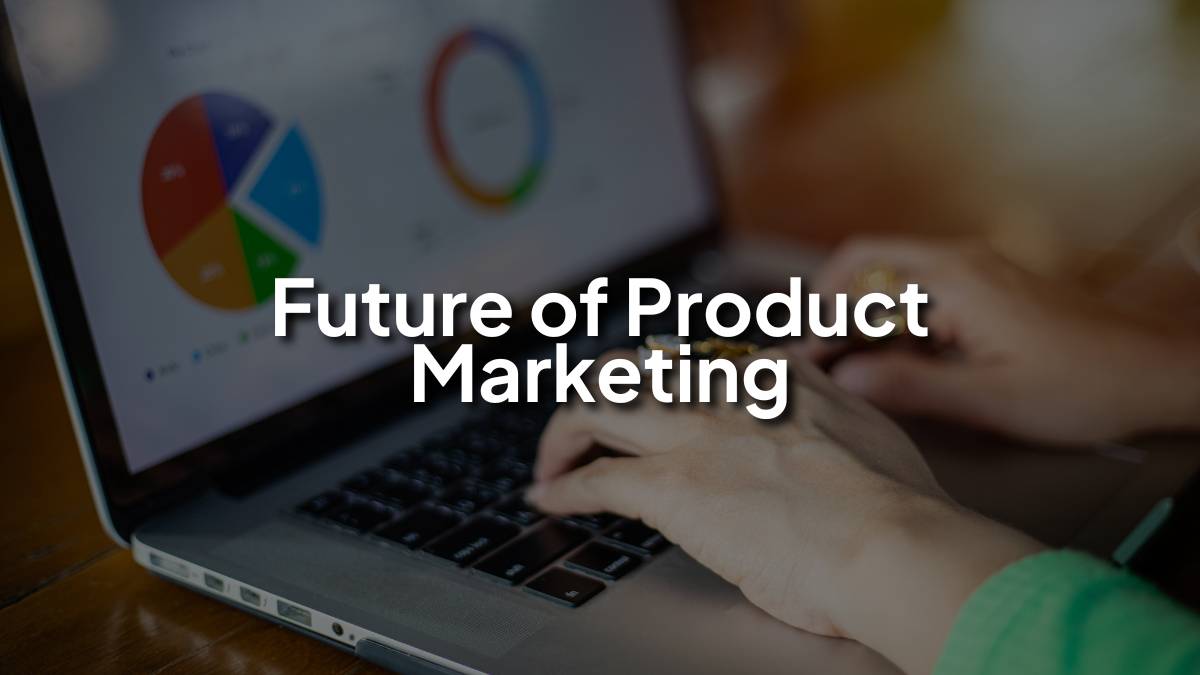Table of Contents
Introduction
Product marketing isn’t what it used to be. Things are moving fast. Faster than most companies can keep up with.
The future of product marketing is being reshaped by AI search technologies. People don’t just scroll through a list anymore. They want answers that feel fast, relevant, and personal.
Some quick points to keep in mind:
- Shoppers expect relevant info instantly. No waiting.
- Products are discovered in smarter, more natural ways, not just through ads.
- Marketing teams need to rethink how they position products, craft messages, and connect with buyers.
It’s not just about tools. It’s about spotting patterns, understanding behavior, and making smarter decisions.
Understanding Product Marketing Today
Definition and Core Role of Product Marketing
Product marketing today sits between product, sales, and marketing. It’s about making products understandable and making people care. The main work? Positioning, messaging, and go-to-market planning. Nothing fancy—just making sure the right people get the right message. It’s practical, hands-on, and always adapting.
Key Components of Product Marketing
The basics haven’t changed much, but focus is sharper. Market research and customer insights guide what we do. Competitive analysis helps the product stand out. Pricing, packaging, and positioning are all part of the mix. Every piece matters. One misstep can mess up a campaign. It’s all connected.
Importance of Data and Analytics in Product Marketing
Data is everywhere. Metrics like adoption rate, retention, engagement, and revenue show what’s working. It’s not just numbers on a screen. They tell a story. They help tweak messaging and campaigns fast. Without them, decisions are guesswork. With them, we can react quickly and avoid wasting time.
Challenges Facing Product Marketing Today
Before AI, things were slower. Data was messy, feedback took time, and messages often didn’t line up. Traditional methods worked, but not always fast enough. Transitioning to modern approaches is tricky. Teams have to juggle old methods and new insights. Keeping campaigns consistent while moving fast is the real challenge.
Also Read: How to Become a Successful Product Marketing Manager
The Rise of AI in Search and Its Impact
1. AI-powered search vs traditional search
Traditional search used to be simple. Keywords, links, and rankings were everything. Now it’s different. AI-powered search understands context, intent, and even the kind of answer a user expects. People don’t just look for products anymore, they look for solutions. This changes how we market entirely, because appearing in search now means anticipating what users truly want.
2. Impact on buyers
Consumers expect fast, relevant, and personalized results. They want products that feel made for them. If we don’t deliver, they move on quickly. Product discovery is now more intuitive. People trust results that match their intent rather than generic listings. Marketing strategies must adjust to meet these expectations in real time.
3. Impact on marketing strategies
AI search is rewriting the rules. It pushes marketers to focus on intent, not just SEO. Campaigns have to be more precise, content more aligned with what buyers are actually asking. Pages need to answer questions before users even think to ask them. It’s about meeting people halfway, making discovery seamless, and staying one step ahead.
4. Examples of AI search tools in product marketing
Marketers are now using predictive search insights, recommendation engines, and analytics to adjust campaigns. Tools that analyze queries help us see trends early. Personalized landing pages and product suggestions are now standard. This makes campaigns more effective, and users feel understood, which builds trust and drives conversions faster than before.

Apply Now: Product Marketing Course
The Future of Product Marketing
1. AI-Driven Consumer Insights
Predictive analytics is helping us see patterns we couldn’t catch before. It’s not perfect, but it gives a hint of what buyers might do next. Behavioral modeling makes it easier to group people in ways that actually make sense instead of forcing them into boxes.
Personalized recommendations are expected now. If a product feels generic, people scroll past. Dynamic segmentation means we can hit the right audience with the right message at the right time.
It also shows gaps in the market. Trends, search patterns, small signals, these can point to opportunities before anyone else notices. It’s not magic, just paying attention.
2. Hyper-Personalization and Customer Experience
People don’t want the same message over and over. They notice when it’s generic. Tailoring campaigns to what someone actually wants makes a big difference.
Content can shift based on search intent, behavior, or even where someone clicked last. A product demo or landing page that feels personal hits harder.
Chatbots, guided demos, or quick FAQs improve experience. They help people make decisions faster and feel seen. Small touches like these add up.
3. Automation in Product Marketing
There’s a lot to keep track of in campaigns. Automation takes repetitive tasks off our plate. Scheduling posts, sending emails, and tracking results can all be streamlined.
It saves time. It reduces mistakes. But it doesn’t replace thinking. Marketers still decide strategy, tone, and creativity. Automation just handles the boring stuff so we can focus on the fun parts.
Consistency improves too. Everything runs smoothly when systems handle routine tasks.
4. AI-Enhanced Product Positioning and Messaging
Product stories are stronger when they’re informed by insights. Data shows what resonates and what doesn’t.
We can test messages in real-time. See which words click, which images grab attention. Then adjust immediately. It’s faster than old-school guesswork.
The goal is smarter positioning, not robotic messaging. Every campaign still needs human judgment. Insights just make that judgment sharper.
5. Predictive Product Launch Strategies
Predicting demand used to be guesswork. Now we can see trends and plan accordingly. It doesn’t always work perfectly, but it reduces risk.
Timing matters. Launch when interest is peaking, not when everyone else does. Messaging, pricing, and channels can all be adjusted based on what the data hints at.
The result is smarter launches. Products get noticed. Resources aren’t wasted. And campaigns feel like they’re in the right place at the right time.
Also Read: Product Launch Checklist
Challenges and Considerations
1. Over-reliance on insights vs human intuition
Numbers help, but they don’t tell the full story. People act in ways data can’t always predict. Focusing only on insights can make campaigns feel stiff or generic. Small cues, context, and gut feeling still matter. Sometimes it’s the subtle things—tone, timing, phrasing—that make a difference. Human judgment can’t be replaced.
2. Data privacy and ethical considerations in marketing
Collecting and using data comes with responsibility. Rules like GDPR or CCPA are just the baseline. Push too far, and trust disappears fast. People notice when campaigns feel intrusive. Transparency, asking permission, and careful handling go a long way. Ethical practices keep relationships strong and campaigns sustainable over time.
3. Bias in algorithms
AI tools can repeat existing biases without anyone noticing. Certain audiences may be favored, others left out. Product recommendations or campaign messaging can feel off if bias isn’t checked. Constant review is needed. Spotting these issues early and adjusting ensures campaigns are fair and reach the right people.
4. Integration with existing workflows
New tools rarely fit perfectly. Teams need to adjust processes, coordinate roles, and make sure AI complements what’s already running. Otherwise work slows down or confusion spreads. Step-by-step integration, testing, and aligning tools with existing strategies help. Done right, AI can boost efficiency without disrupting the team.
5. Dependence on high-quality data
Garbage in, garbage out. AI depends entirely on the data fed to it. Incomplete or messy data leads to wrong insights. Cleaning and validating data isn’t optional. Teams must invest time in this. Otherwise, campaigns miss the mark, waste effort, and opportunities slip through the cracks.
6. Maintaining human creativity and empathy
Automation can handle repetitive work. Good. But emotional impact, storytelling, and brand voice still need humans. Campaigns can’t feel real if everything is AI-driven. The best results come from mixing efficiency with human judgment. People need to steer tone and messaging while machines handle the grunt work.
Also Read: Best Product Marketing Tools
Preparing for the AI-Driven Future
1. Skills marketers need
Tools are only as good as the people using them. Understanding data helps, sure. But creativity, judgment, and storytelling still count. Marketers need to spot trends, notice patterns, and adapt fast. Things change quickly. Staying alert and adjusting on the fly is what keeps campaigns working.
2. Recommended tools and platforms
There’s a lot out there: automation, analytics dashboards, and personalization platforms. They save time, no doubt. But not every tool fits every team. The trick is to pick what actually works, fits the workflow, and frees people to focus on strategy and ideas.
3. Balancing automation with human creativity
Automation can handle the boring stuff. Good. But the story, the tone, the emotional impact, humans still decide that. The best campaigns use machines for grunt work and people for the memorable stuff. It’s a mix. Speed and creativity together get the results that matter.
Also Read: 11 Great Product Marketing Examples
Conclusion
Product marketing is changing. Fast. AI search is shifting how people find and choose products. It’s no longer just about posting content or running ads. The future of product marketing in the era of AI search is not just about tools, it’s about strategy, personalization, and insight-driven decision-making.
Companies that adapt early will see the advantage. Using these insights doesn’t replace people. It helps teams connect better with customers. Campaigns that mix understanding, creativity, and timing get noticed.
The key is simple. Watch trends. Stay flexible. Use technology to help humans make smarter choices. Things will keep evolving, so marketing must too.
FAQ: Future of Product Marketing in the Era of AI
What is AI product marketing?
It’s marketing that uses data and insights to understand customers and predict behavior. The goal is to make campaigns more relevant and targeted. It’s not magic. It’s more about noticing patterns and applying them smartly.
How will AI search change product marketing strategies?
People discover products differently now. They expect answers that match their intent. Marketers need to focus on context, anticipate questions, and make products easy to find. Traditional keyword strategies aren’t enough.
Which skills are essential for future product marketers?
We need a mix of analysis and creativity. Seeing trends, understanding data, crafting messages, and adapting quickly are all key. Human judgment still matters.
How can companies implement AI in product marketing?
Start with small steps. Use tools that help but don’t take over. Test, measure, adjust. Combine automation with real human input. Make campaigns personal without losing efficiency.
What are the risks of AI-driven product marketing?
Over-reliance on data, privacy issues, and impersonal messaging are big risks. If customers feel tracked or ignored, trust is lost. Ethics and transparency are essential. Campaigns need balance.

